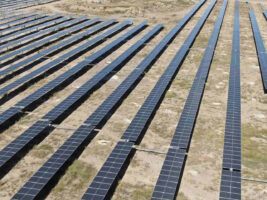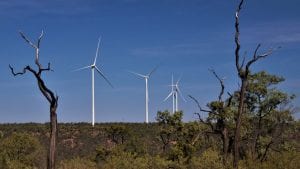Australia – along with 189 other nations – is a signatory to the Paris Agreement committing to limiting warming to 2°C, whilst working towards limiting warming to 1.5°C.
Today, the Commonwealth Department of the Environment released a new report titled ‘Modelling and analysis of Australia’s abatement opportunities: meeting Australia’s 2030 emissions reduction target’.
Opportunities considered were limited to those that could feasibly be delivered under the current suite of announced climate change policies. This study identified emission reduction activities and then allocated them to existing programs and policies.
Energetics’ analysis shows there is potentially significant low-cost abatement available to meet the 2030 target.
The key findings from this analysis are:
+ Australia can reach its 2030 abatement target under the current policy framework. Large emitters must be effectively engaged and programs pursued without delay.
+ Modelling over more than 20 years shows that the emissions intensity of the Australian economy fell on average by 2.3 percent each year, suggesting that national emissions are decoupling from economic growth.
+ Australia will achieve its 2020 cumulative abatement target under the Kyoto protocol, equivalent to 5 per cent below 2000 levels by 2020. Energetics has identified further abatement opportunities that can be pursued, to reach an absolute 2020 target.
In total, the report identified over 960 Mt CO 2 -e in cumulative abatement that could be delivered between 2021 and 2030. The potential abatement that can be achieved in Australia is sufficient to meet the current 26-28% emissions reduction target, and there is opportunity to deepen Australia’s target further with abatement measures extended to additional sectors.

A highlight finding was the potential abatement that can be achieved through the implementation of energy productivity measures – 44 per cent of the total abatement from opportunities identified.
In addition to established energy efficiency measures, improvements in energy productivity will come from energy system optimisation, improvements in vehicle fuel efficiency and enhancements to the built environment. Many of these measures will potentially be addressed by the National Energy Productivity Plan.
Land-use change measures can also make a significant contribution to delivering Australia’s potential cumulative abatement over the 2021-2030 period, accounting for 38 percent of the total abatement identified.
Experience of the three Emissions Reduction Fund auctions to date suggests that current and future markets for ACCUs will drive abatement from these opportunities. The study also allocated measures across broad groups that provided an exhaustive coverage of all major areas of both established and emerging abatement opportunities in 2030 (see Figure2).
Improved land management and low emissions farming practices (group 9) and low carbon transport (group 8) are capable of contributing the most to Australia’s total low-cost abatement by 2030. In total the two groups account for just over 50 per cent of Australia’s total identified abatement potential.
In the 2014-15 financial year, transport emissions accounted for over 93 Mt CO 2 -e 1 of Australia’s emissions, and there is significant opportunity to reduce this. Abatement delivered through improved land-use practices will generate carbon sinks, providing further offsets.

Low carbon precincts (group 2) and digital infrastructure displacing transport fuel use (group 3) are likely to require additional support beyond that considered. These groups are forecast to deliver the lowest quantity of abatement on a per annum basis in 2030, but are likely to contribute a significant portion to the total abatement potential in the period from 2030 to 2050.
Finally, the abatement opportunities were allocated to the most appropriate policy or program, with the focus on the Emissions Reduction Fund and Safeguard Mechanism, and the National Energy Productivity Plan.
Abatement opportunities that were considered to be business as usual were part of the baseline, with many attributed to technological advances. Some further measures were expected to be driven by other polices such as the phase out of alternatives to ozone depleting substances.
Energetics also considered the impact of non-government movements that are capable of driving emissions reductions. For example, we see the impact of growing market and consumer pressure that influences business to reduce their carbon intensity.
The contribution of potential abatement to meet the cumulative abatement potential is shown in Figure 3. Technology improvements play a key role as does the Emissions Reduction Fund and Safeguard Mechanism.

Figure 3 above shows the total domestic abatement opportunity identified by Energetics that can be delivered under existing policies or programs. There is sufficient opportunity for abatement covered by existing policies for Australia to meet its current commitment under the Paris Agreement.
Australia supports a 2 degree limited world. This may mean require further emission reductions beyond 28% are driven by the 5 yearly global review mechanism in the Paris Agreement. Our national response will require further decarbonisation of the electricity sector.








